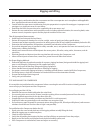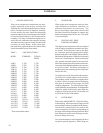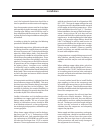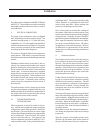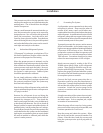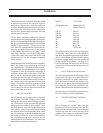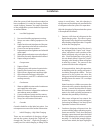
14
• Get third-party conrmation that the crane owner and the crane operator are in compliance with applicable
laws, regulations and internal safety standards;
• Consult with the crane owner to determine if any site preparation is required for outriggers—improper use of
outriggers is a signicant cause of crane failure;
• Determine the level of supervision to be supplied by the crane owner; and
• Review all crane maintenance and inspection records, including without limitation, the crane log book, main-
tenance records, inspection reports and the physical condition of the crane.
Take all Appropriate Measurements
• Understand and interpret the load charts;
• Review all Compressor drawings for unit size, weight, center of gravity and other specications;
• Communicate incident response procedures in writing prior to the lift and verbally immediately before the lift;
• Determine the initial position, nal position, orientation and elevation of the Compressor;
• Ensure that adequate space is provided to safely assemble, erect, and operate the crane and materials (such as
timber mats, cribbing and blocks);
• Identify and communicate to all Participants the access points, lift radius, swing radius, clearances, and ob-
structions;
• Eliminate hazards and obstructions that may interfere with moving the Compressor; and
• Inform all Participants of water lines, sewer lines, power lines and other obstructions.
Use Proper Rigging Methods
• Determine diameter, length and quantity of necessary rigging hardware (design and detail the rigging hard-
ware to suit lifting the Compressor at the supplied pad eyes);
• Review and inspect all hoisting, lifting and rigging equipment;
• Select shackle size and prepare sketches or drawings for rigging;
• Use proper, conservative rigging techniques—including spreader beams—needed to lift the Compressor;
• Pad sharp corners, check the orientation of chocker hitches and the orientation of hooks;
• Prevent the binding of hoist rings; and
• Verify pad eye information.
TEST AND BALANCE THE COMPRESSOR
It is essential to test and balance the compressor before executing the actual lift in order to identify potential
causes of injury to Participants and the Compressor.
Secure Rigging and the Lift Site
• Reiterate that no one should walk under the raised load;
• Secure and restrict access to the lift area (consider vacating all non-essential personnel from the area);
• Provide qualied supervision for the duration of the lift;
• If applicable, assess the weather conditions and decide if it is safe to proceed;
• Stop the lift when any potentially unsafe conditions are recognized; and
• Ensure there are open channels for communications during the pre-lift, lift and post-lift phases (radio commu-
nications should be used if a direct line of sight is not possible).
Test and Balance the Compressor before the Lift
• Slowly raise the crane to take slack out of the rigging without actually lifting the load;
• Allow the rigging gear to settle into place;
• Check for twists and binds;
• Verify that all padding has remained in place and that all slings are protected from sharp edges;
• Begin to raise the load to verify balance and check the braking system; and
• If the Compressor is not balanced, lower and adjust as necessary.
Rigging and Lifting











